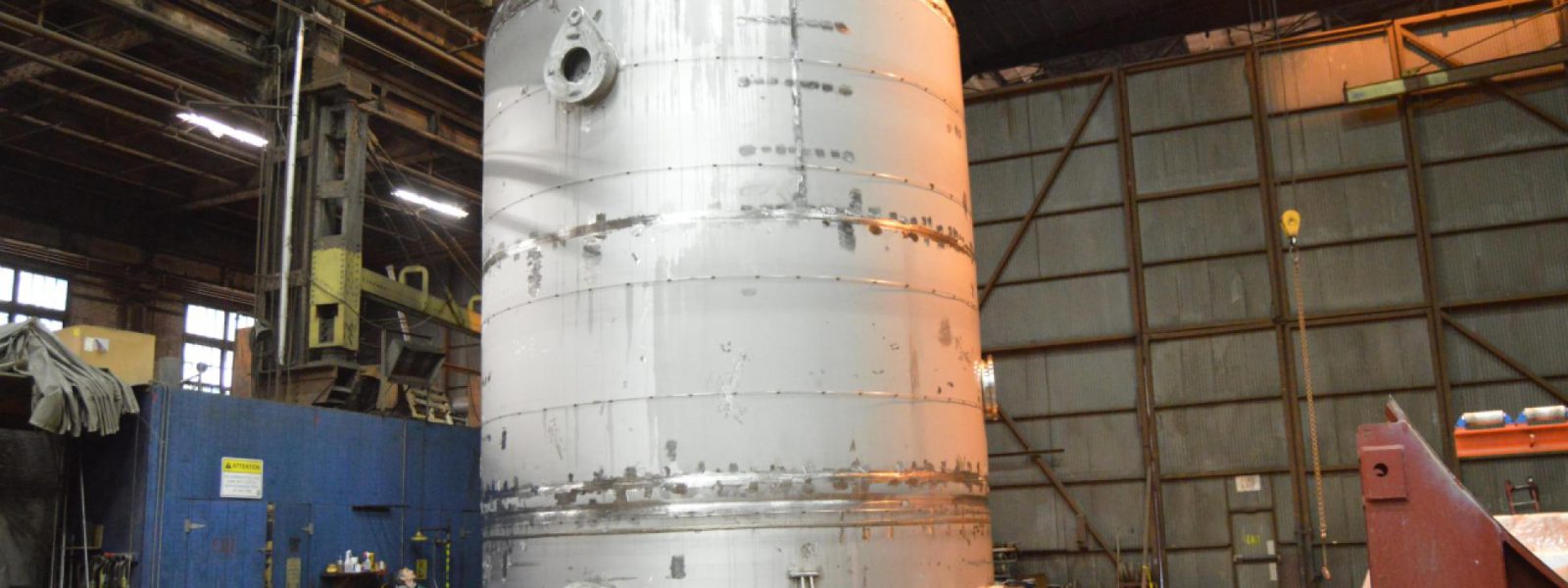Conductor for toroidal field magnets, drain tanks and electrical components are being delivered to Europe for installation at the ITER site
―Lynne Degitz
As the international ITER magnetic fusion facility rises out of the ground in southern France, US ITER is ramping up hardware deliveries to Europe. In January, the United-States delivered its first batch of production conductor for the super-conducting toroidal field magnet system; the US also completed delivery of the first highly exceptional load, a massive high voltage transformer for the steady state electrical system, to the ITER site. In March, the first components of the tokamak cooling water system, two large drain tanks, were shipped from Camden, N.J. for delivery to the ITER site.
US deliveries are timed to meet the construction schedule for the international project. The drain tanks, for example, are among the first large-scale components delivered to the ITER site because they need to be installed in the basement level of the tokamak building during construction. The electrical component deliveries are needed so the ITER site can receive power from the 400kV grid as the installation and commissioning activities intensify and the electrical demand increases beyond the capacity of the temporary power source now in use. US ITER is using the US-based vendor TransProject, LLC, to handle shipping, as part of a project-wide logistics services agreement.
The mission of the ITER project is to demonstrate the scientific and technological feasibility of fusion energy. As an international collaboration of unprecedented scale, the project demonstrates the cooperation and coordination needed to accomplish world-changing energy breakthroughs. The European Union, the host partner for ITER, contributes 45 percent to the construction of the facility, while the United States, China, India, Japan, Korea and the Russian Federation contribute just over 9 percent each in in-kind contributions of hardware. Regardless of contribution, all of the partners will receive equal access to the science and technology that is developed for the project, making ITER one of the most highly leveraged international science collaborations in US history.


The January toroidal field conductor delivery to the EU winding facility in La Spezia, Italy is the first US shipment of production conductor which will be installed in the ITER machine. Earlier US deliveries of toroidal field coil conductors were used to verify the manufacturing and winding process. The production conductor will be wound by the EU into a D-shaped coil before installation. The US is providing 8 percent of ITER’s toroidal field conductor, for a total of over 4 miles of conductor, and will complete its conductor deliveries by 2016. Five other ITER partners—China, the European Union, Japan, Korea and Russia—also are contributing toroidal field conductor. The toroidal field coils will produce a powerful magnetic field around the ITER tokamak torus to confine the plasma particles.
The drain tank delivery, which will be completed this spring, consists of four 61,000 gallon tanks, plus one smaller 27,000 gallon tank. Manufactured by Joseph Oat Corporation in Camden, N.J. under contract to Areva Federal Services in Charlotte, N.C., the tanks are the first ITER components to be manufactured in the US to comply with French nuclear safety pressure regulations.
Two of the large drain tanks are for normal tokamak operating conditions; they will provide water storage during maintenance and inspection, as well as draining and drying. These tanks will also provide volume control during operation of the vacuum vessel primary heat transfer system. The other two large tanks are designed for safety purposes: They can receive water from the vacuum vessel in case of a loss of coolant event. The smaller tank is used during normal operations to provide water storage for the neutral beam injection primary heat transfer system. The United States is responsible for the design and procurement of the entire tokamak cooling water system, which is the primary cooling system for the ITER machine and has the capacity to remove 1 GW of power from client systems in the form of heat.
A high voltage transformer procured by US ITER as part of the 75 percent US contribution to ITER’s steady state electrical network, was delivered to the ITER site in January via a special itinerary for highly exceptional loads between the Mediterranean and the ITER site in Cadarache, France. In the months to come, the US will deliver three other identical transformers to the site, plus 6.6 kV and 22 kV switchgear components.
US participation in ITER is sponsored by the U.S. Department of Energy Office of Science (Fusion Energy Sciences) and managed by Oak Ridge National Laboratory in Tennessee, with contributions by partner labs Princeton Plasma Physics Laboratory and Savannah River National Laboratory. For more information, see usiter.org. ORNL is supported by the DOE Office of Science. The Office of Science is the single largest supporter of basic research in the physical sciences in the United States, and is working to address some of the most pressing challenges of our time. For more information, see science.energy.gov.
Media Contact: Lynne Degitz
